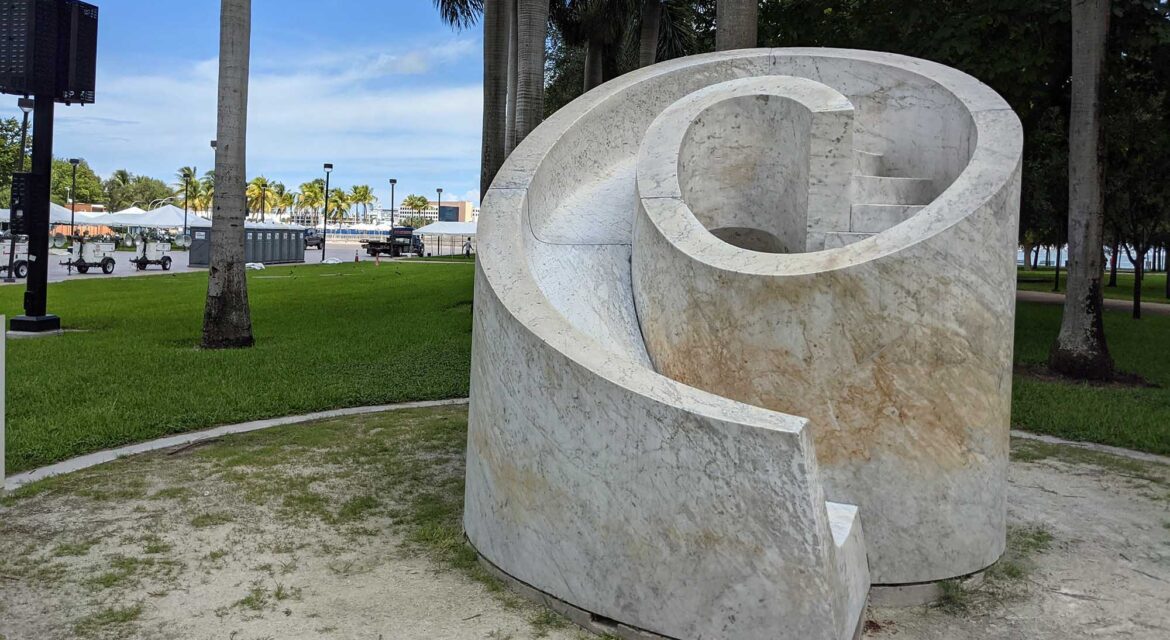 Located in Miami, Florida, Slide Manta by Isamu Noguchi was originally the centerpiece of the 1986 Venice Biennale exhibition. Since being permanently installed in Bayfront Park in 1991, the piece has become one of the main features of the park. That interest stems from how audiences can literally ascend and then slide down the sculpture, with steps winding up the back that descends into a spiral.
Located in Miami, Florida, Slide Manta by Isamu Noguchi was originally the centerpiece of the 1986 Venice Biennale exhibition. Since being permanently installed in Bayfront Park in 1991, the piece has become one of the main features of the park. That interest stems from how audiences can literally ascend and then slide down the sculpture, with steps winding up the back that descends into a spiral.
Bayfront Park underwent a major redesign by Noguchi in 1986 and while his full vision for the space wasn’t totally realized, features like Slide Mantra and the Challenger Memorial underscore how monuments can contribute to these sorts of visions for a park or space. Slide Mantra connects with his philosophy that play would encourage a new appreciation of sculpture, which is something audiences can experience across the park but in an especially personal manner via Slide Mantra.

 Noguchi was thinking of Bayfront Park when he created the spiral staircase which combines architectural, natural and cosmic imagery in a form that is both aesthetically pleasing and functional. He said the work would only be completed when the slide was polished by the action of many kids sliding down it.
Noguchi was thinking of Bayfront Park when he created the spiral staircase which combines architectural, natural and cosmic imagery in a form that is both aesthetically pleasing and functional. He said the work would only be completed when the slide was polished by the action of many kids sliding down it.
The 29-ton sculpture was carved from Carrara marble, a material that is connected to the tactile quality of sculpture that Noguchi believed was paramount. The architectural elements of the piece are easy to spot, while the natural and cosmic ones can be seen and experienced on multiple levels. The piece seamlessly blends into the landscape of Bayfront Park but is nonetheless easy to spot and engage with.
The sculpture’s combination of form and function with the natural landscape of Bayfront Park have elevated both in a way audiences can experience and appreciate. Doing so highlights what it can mean for such pieces to both define and be part of a vision for a space and entire city in small and large ways.

